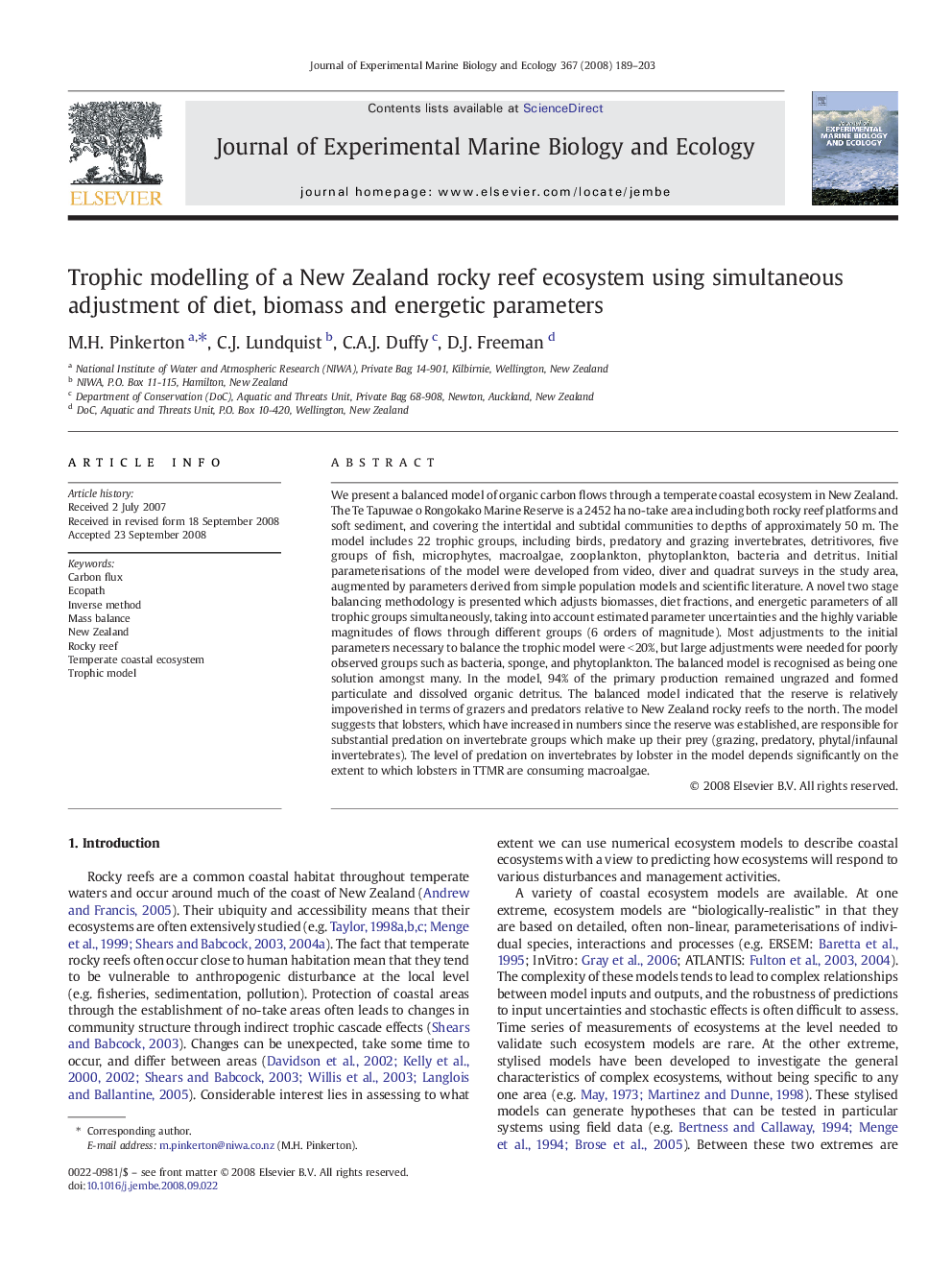| کد مقاله | کد نشریه | سال انتشار | مقاله انگلیسی | نسخه تمام متن |
|---|---|---|---|---|
| 4397132 | 1305866 | 2008 | 15 صفحه PDF | دانلود رایگان |

We present a balanced model of organic carbon flows through a temperate coastal ecosystem in New Zealand. The Te Tapuwae o Rongokako Marine Reserve is a 2452 ha no-take area including both rocky reef platforms and soft sediment, and covering the intertidal and subtidal communities to depths of approximately 50 m. The model includes 22 trophic groups, including birds, predatory and grazing invertebrates, detritivores, five groups of fish, microphytes, macroalgae, zooplankton, phytoplankton, bacteria and detritus. Initial parameterisations of the model were developed from video, diver and quadrat surveys in the study area, augmented by parameters derived from simple population models and scientific literature. A novel two stage balancing methodology is presented which adjusts biomasses, diet fractions, and energetic parameters of all trophic groups simultaneously, taking into account estimated parameter uncertainties and the highly variable magnitudes of flows through different groups (6 orders of magnitude). Most adjustments to the initial parameters necessary to balance the trophic model were < 20%, but large adjustments were needed for poorly observed groups such as bacteria, sponge, and phytoplankton. The balanced model is recognised as being one solution amongst many. In the model, 94% of the primary production remained ungrazed and formed particulate and dissolved organic detritus. The balanced model indicated that the reserve is relatively impoverished in terms of grazers and predators relative to New Zealand rocky reefs to the north. The model suggests that lobsters, which have increased in numbers since the reserve was established, are responsible for substantial predation on invertebrate groups which make up their prey (grazing, predatory, phytal/infaunal invertebrates). The level of predation on invertebrates by lobster in the model depends significantly on the extent to which lobsters in TTMR are consuming macroalgae.
Journal: Journal of Experimental Marine Biology and Ecology - Volume 367, Issue 2, 15 December 2008, Pages 189–203